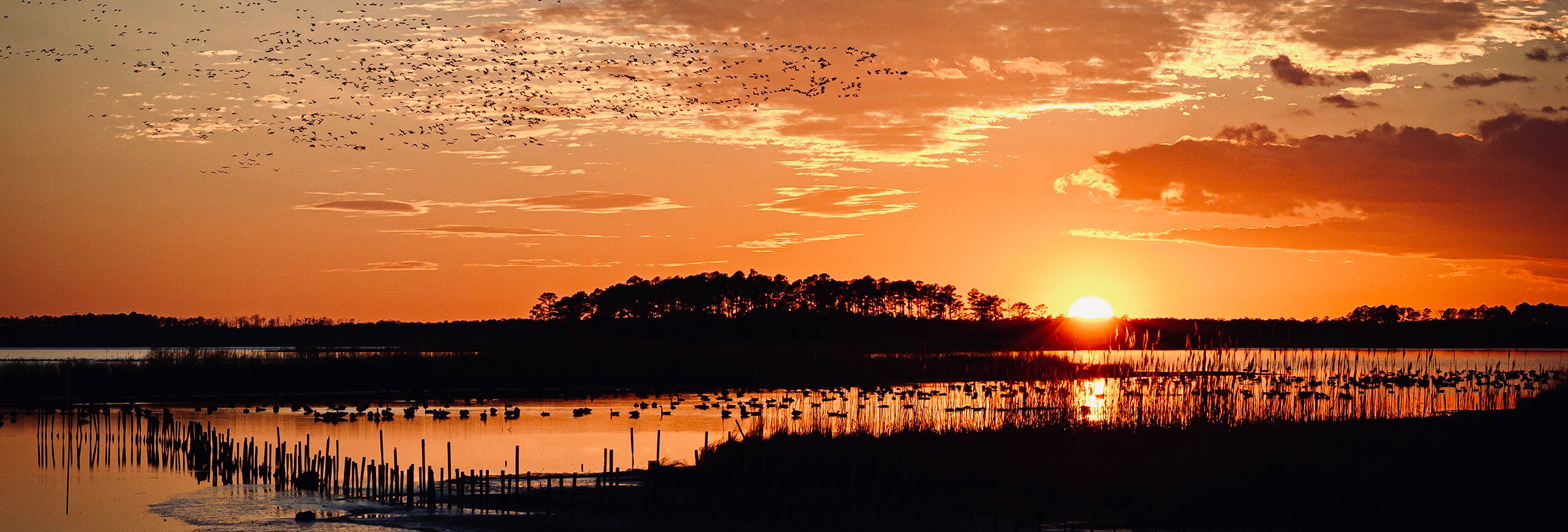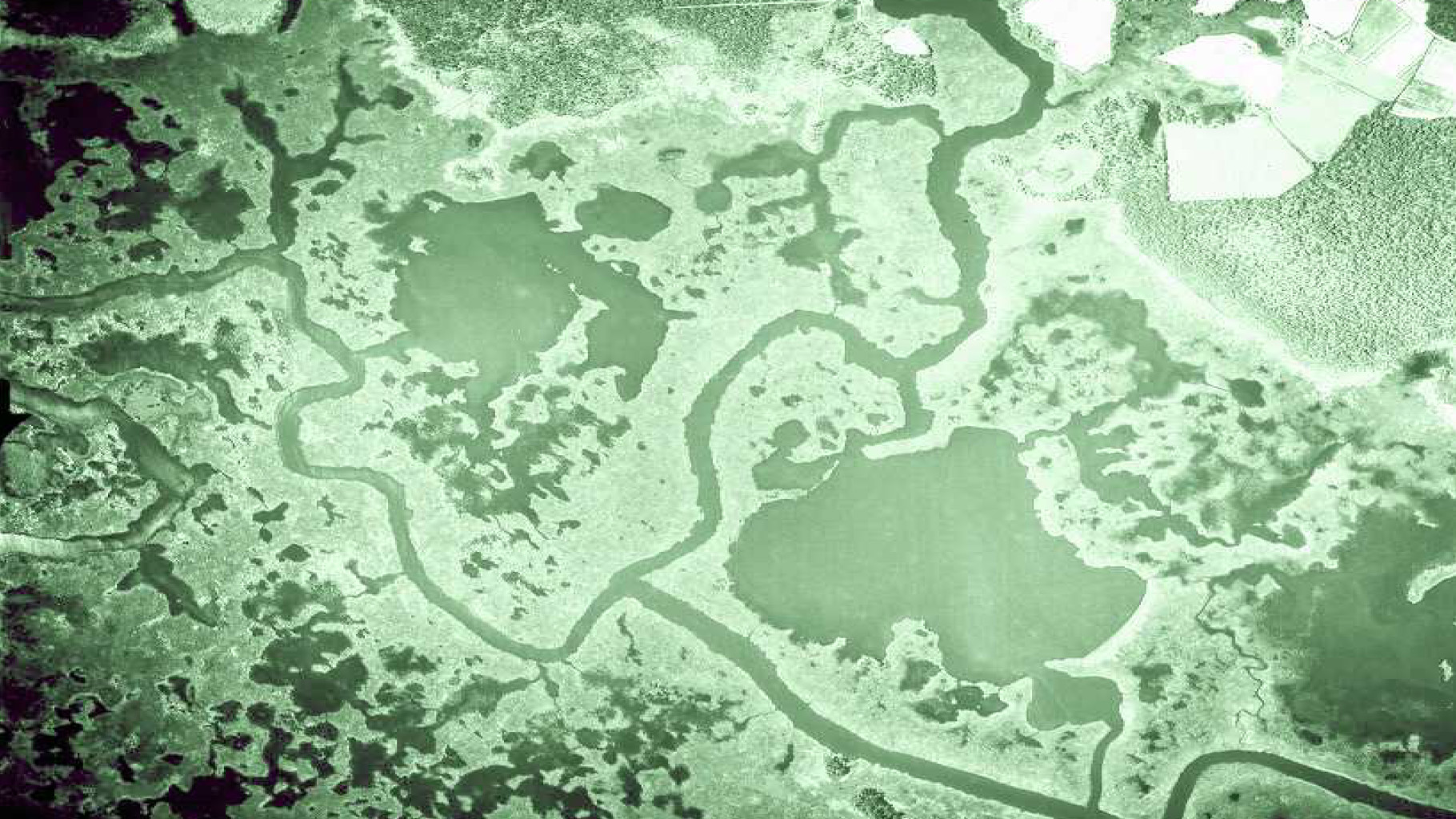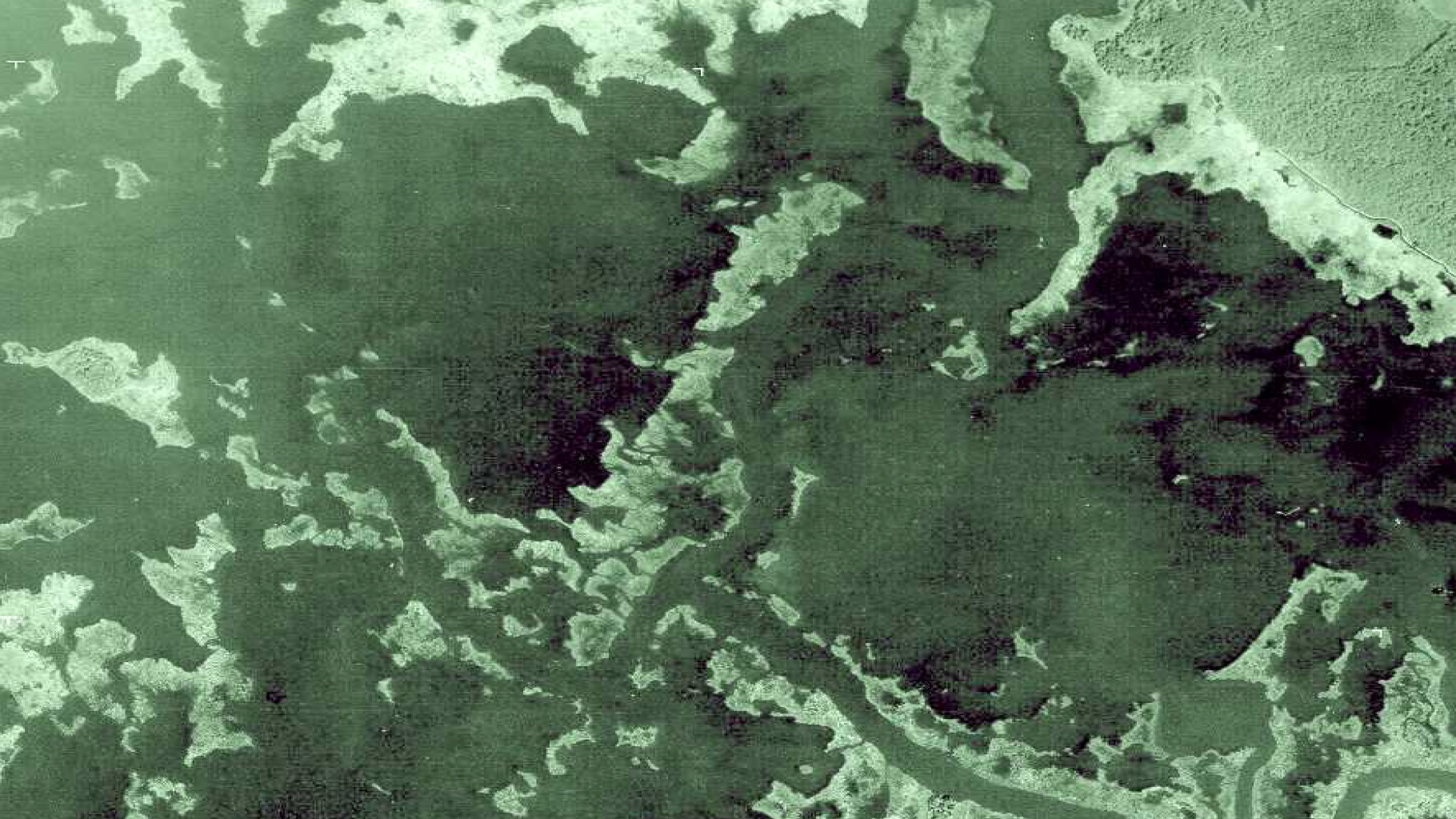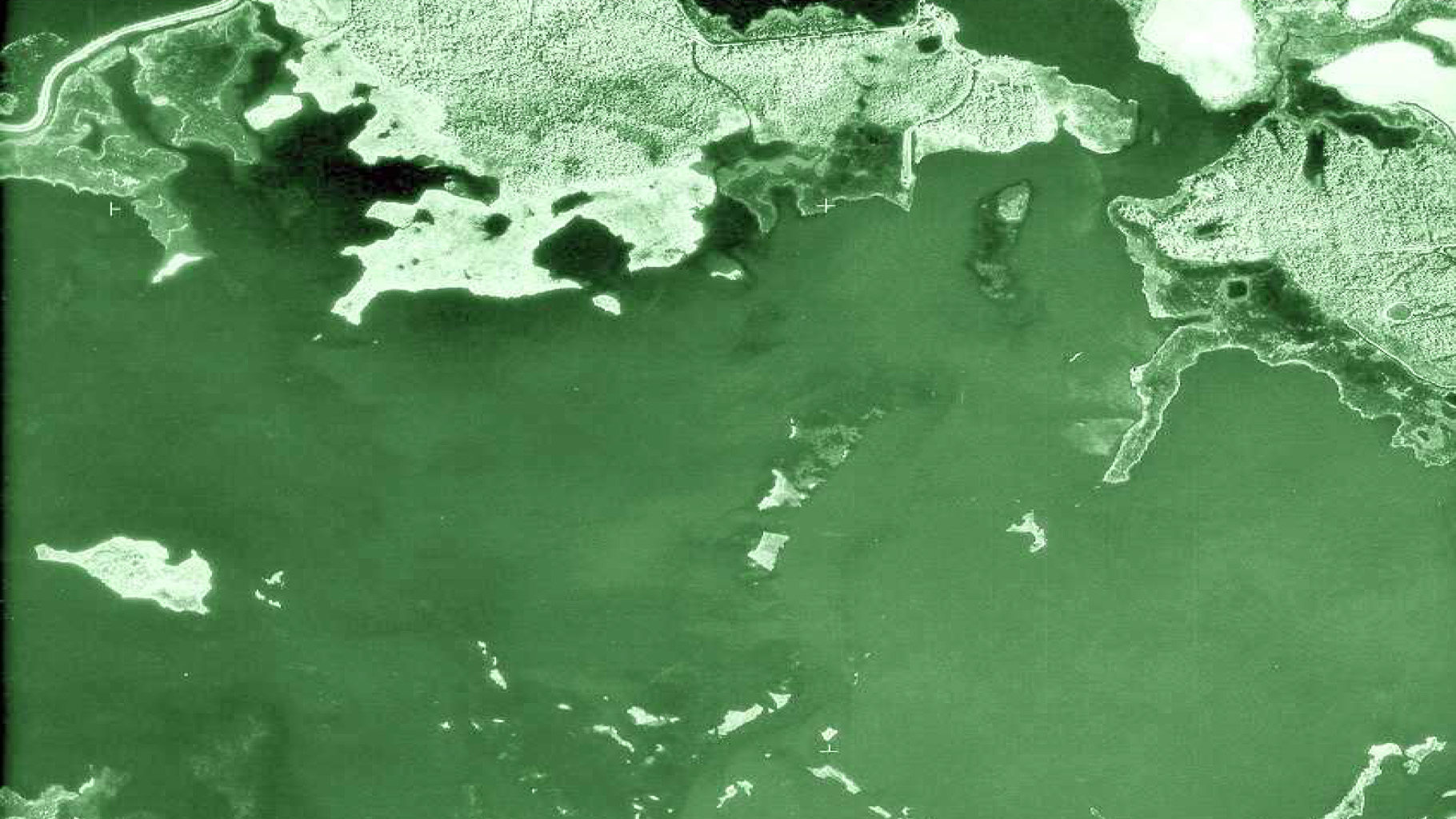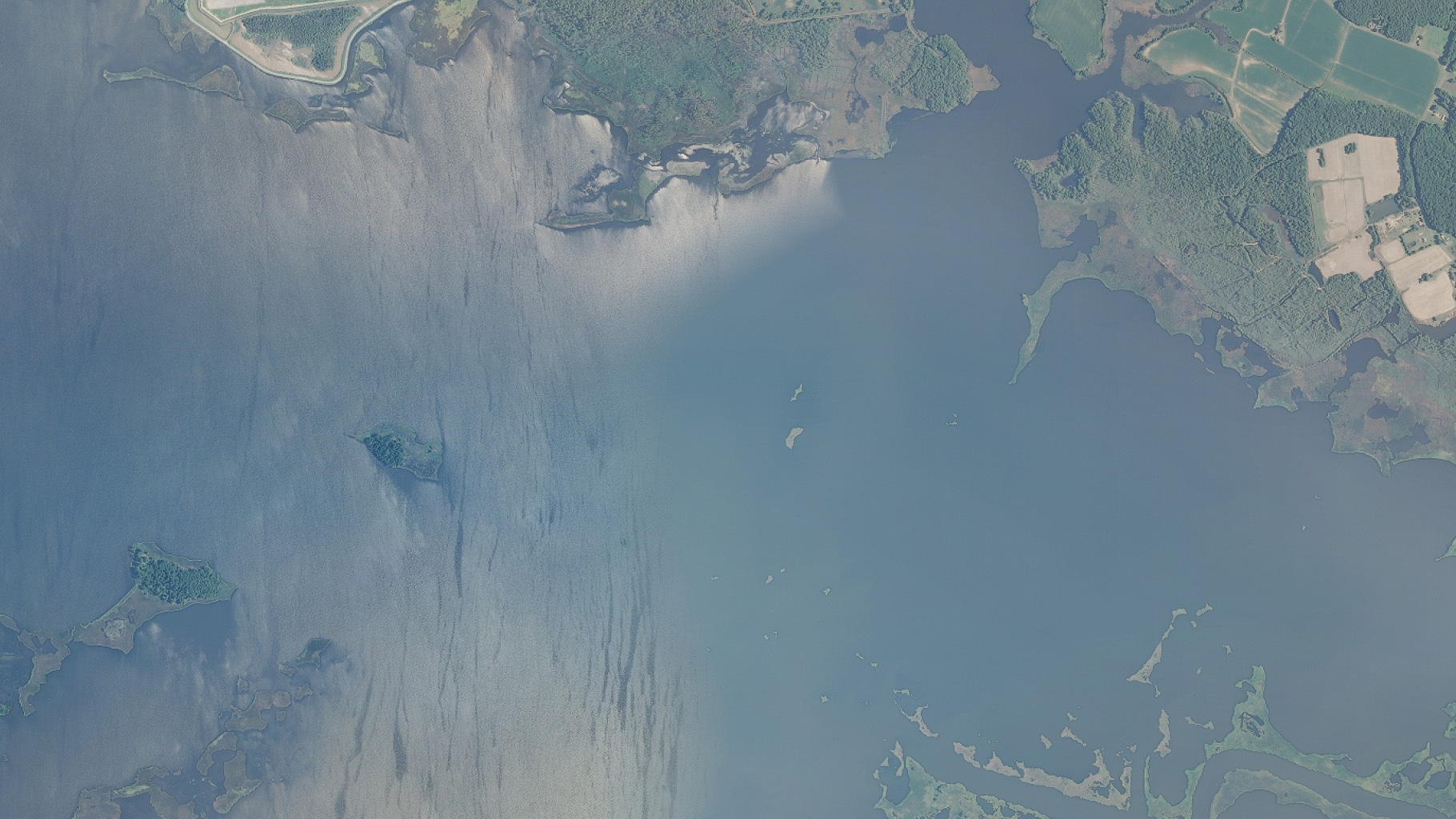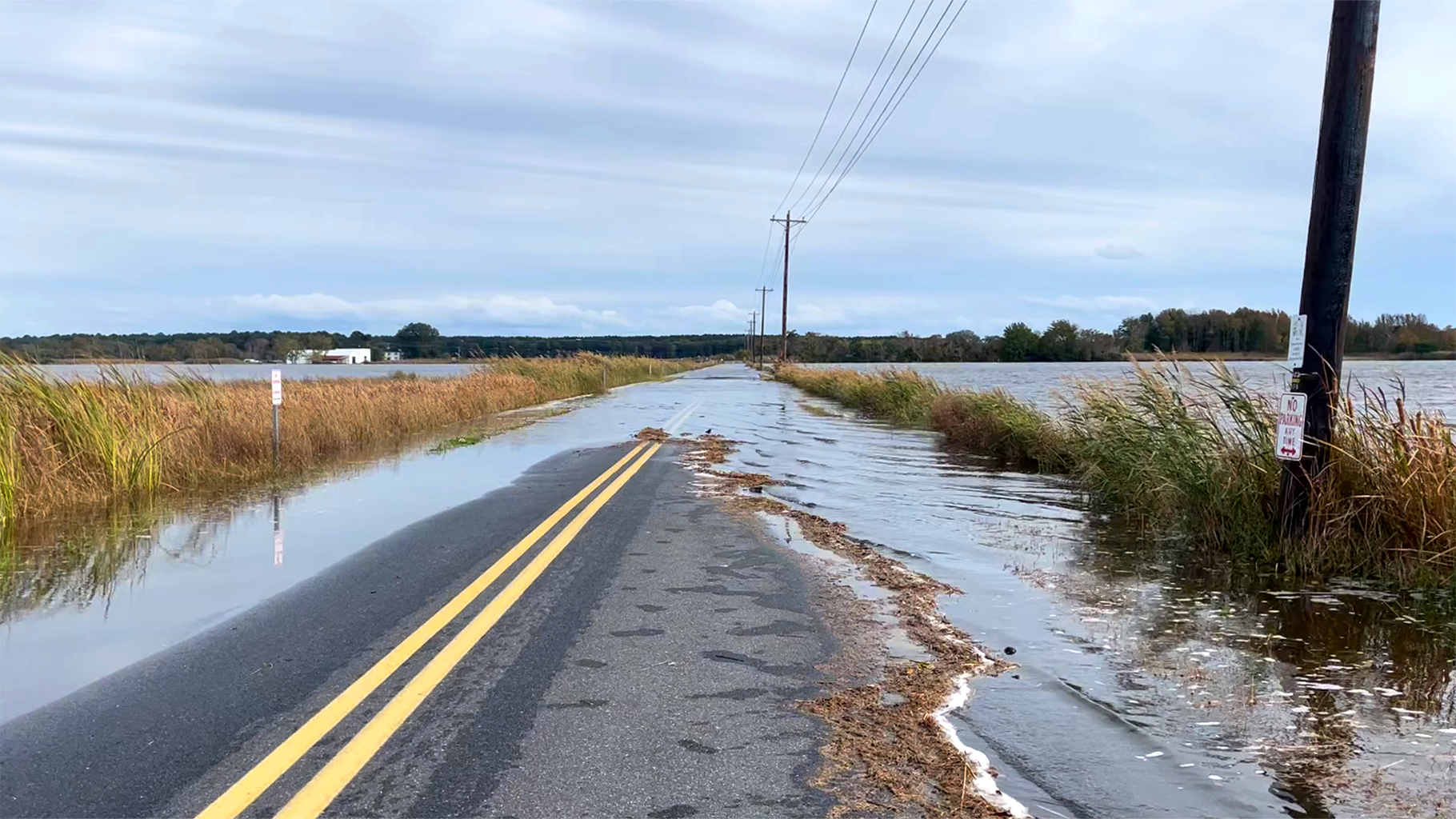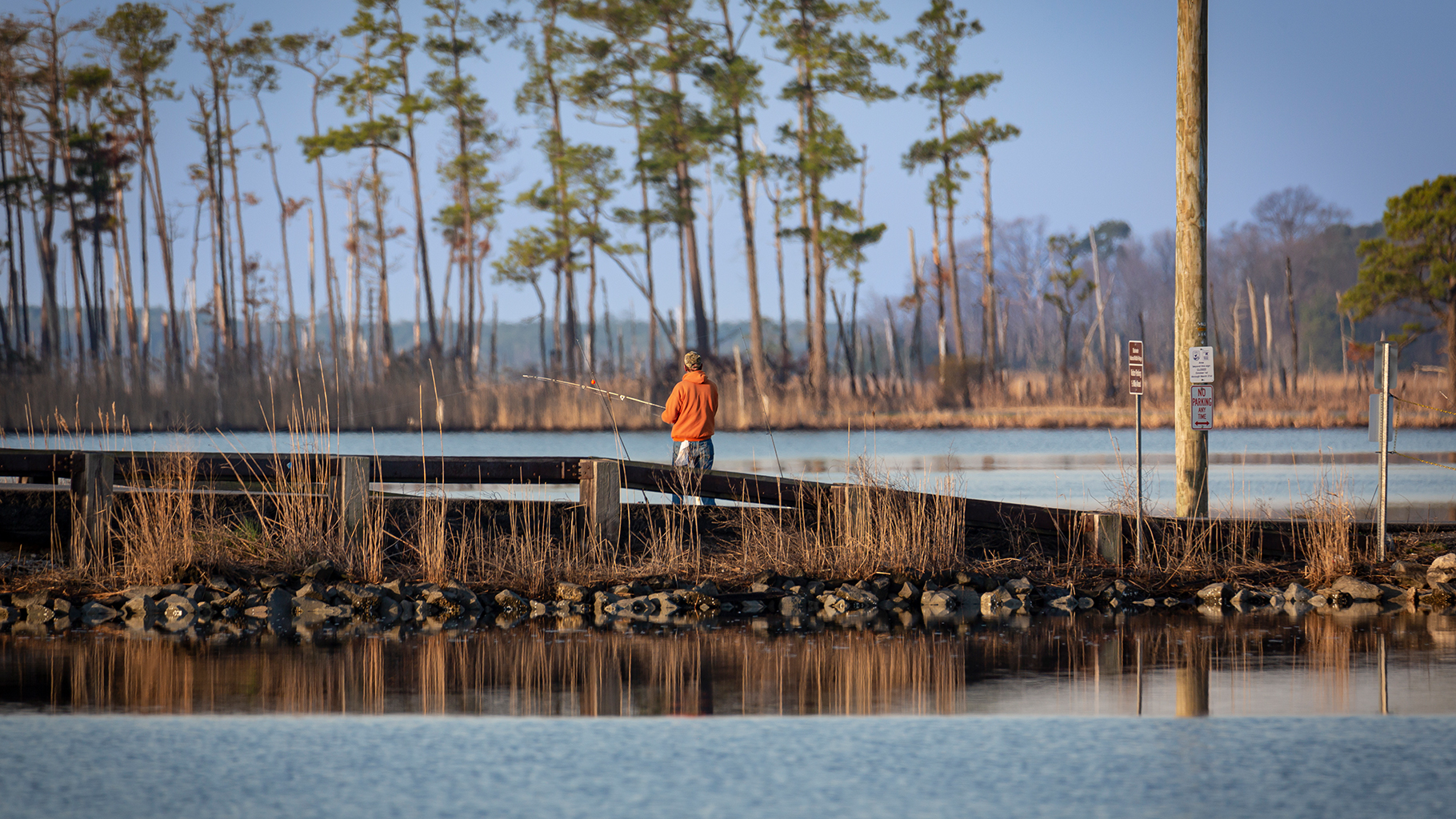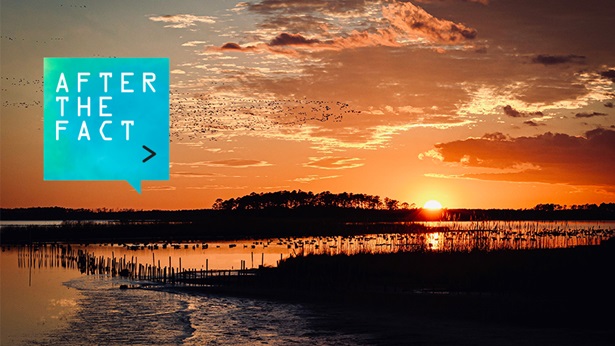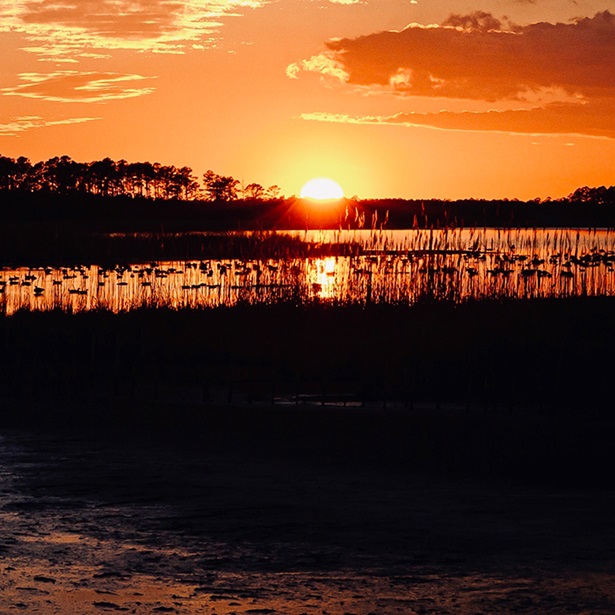In a single 360-degree spin, a casual visitor to the Blackwater National Wildlife Refuge can spy a blue heron strutting through mudflats and white-tailed deer and their cousins—called sikas—striding through croplands while a flock of egrets lifts into a late-summer-afternoon sun.
Established in 1933, Blackwater is a waterfowl sanctuary along the Atlantic Flyway on Maryland’s Eastern Shore. The place is tranquil but not quiet: Birds chirp, squawk, and sing. The refuge is notable for its part in preserving the American bald eagle, which can often be spotted swooping in midair or looking down from nests high in the treetops.
But for all the bird calls and activity, much of what is happening at Blackwater is silent. The Chesapeake Bay, like the ocean along much of the U.S. coastline, is rising, and its waters are engulfing the land. Blackwater has lost 5,000 acres of wetlands since the late 1970s, and Maryland state researchers predict that the waters could rise 2.1 feet by 2050—which means that if you were patient enough to stand at the shoreline without moving, the water would pass your knees in less than three decades.
Blackwater’s lowlands are notable because they preview what is beginning to happen to much of the country’s coastlines. “At Blackwater you’re seeing in fast motion, compared to the rest of the country, the effects of climate change,” says Joseph Gordon, who directs The Pew Charitable Trusts’ project to preserve marine life in the United States.
The project works to conserve salt marshes and other key habitats and areas along the country’s coastlines in partnership with local leaders, Indigenous communities—and often the U.S. Department of Defense, which sees the rising waters threatening bases and the military’s mission of protecting the nation.
“The Blackwater National Wildlife Refuge is in a really key location beneath some critical airspace for the Department of Defense and for the Navy, in particular, where they train pilots and train on a lot of important aircraft. Part of that process involves needing to maintain a very safe, quiet, and dark space beneath that training area,” says Kristin Thomasgard, program director for the Department of Defense’s Readiness and Environmental Protection Integration Program. “Part of what is so important to the Department of Defense is our stewardship of important natural resources and important waterways.”
Land and livelihoods, national security, and many species of birds and other wildlife are not all that’s at risk from rising water at Blackwater. Knowledge of our nation’s past is also on the brink of being washed away.
Harriet Tubman grew up near what is now the Blackwater refuge, escaped slavery, and then returned to the region to free other slaves, guiding them to safety on the Underground Railroad. Last year, state archaeologists discovered the location of the cabin where she was born 200 years ago.
But soon after the discovery came another more disheartening understanding: “We would excavate a 5-foot-by-5-foot excavation unit and dig down about not even a foot. And we’d leave and come back the next morning, and our units were full of water,” says Julie Schablitsky, chief archaeologist for the Maryland Department of Transportation. She predicts that the site could be submerged within a decade—and notes that other important historic sites around Chesapeake Bay face the same fate.
“We’re really in a race against time because [the rising water] is eating away shorelines where people lived thousands of years ago,” Schablitsky says. “Even when we were looking for the Lost Colony of Roanoke, you could see how the edge of where they lived was being eaten away by the wave action. All these sorts of things have always been a problem for archaeologists, but it seems to be escalating at an alarming rate.”
The expanding water means that marshland can be lost, and even the areas that remain can become different from what was there before. Invasive vegetation called phragmites—very tall grass from Europe that doesn’t have nearly as much wildlife value as the native marsh grasses—is taking over more and more marsh real estate.
In the past, biologists and ecologists tried to restore wetlands to pre-Colonial conditions before settlers came in. But the changes coming now are forcing coastal communities to rethink how they go about restoration and conservation, not just in Blackwater but along other U.S. coastlines. And there are other challenges.
“Most of the U.S. coast is privately owned,” says Pew’s Gordon. “With sea-level rise happening, we can’t solve that problem with new parks and refuges alone; that’s not going to happen. What really needs to happen is people coming together to help, with the parks, with the refuges, with state parks, with private lands, to develop a plan for the future so we can create the kind of coastal habitat that we—and the wildlife that depends on it—need.”
Carol Kauffman is a staff writer for Trust.
Learn more about the rising waters at Blackwater National Wildlife Refuge on Pew's podcast, "After the Fact."
